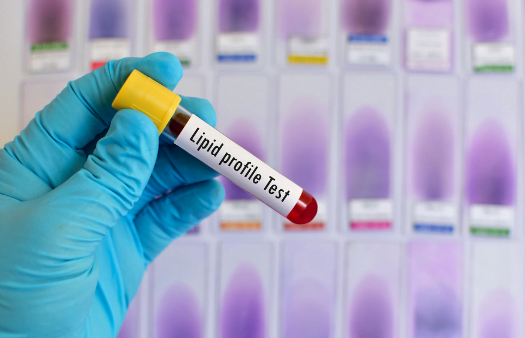Oxidized Lipid Biomarker Testing in Fish Tissue
The evaluation of lipid biomarkers in fish tissue is crucial for understanding the health and welfare of aquatic life, particularly in commercial aquaculture settings. Oxidized lipids serve as indicators of oxidative stress within the fish body, which can be influenced by environmental factors such as water quality, diet, and exposure to pollutants. This testing service plays a pivotal role in ensuring the safety and quality of fish products for human consumption.
In this context, oxidized lipid biomarkers are evaluated using advanced analytical techniques that provide precise measurements of oxidative stress levels in various parts of the fish. The process involves collecting representative samples from different stages of production to ensure comprehensive analysis across all relevant parameters.
The significance of this testing extends beyond mere compliance; it offers valuable insights into potential health risks associated with compromised lipid integrity due to environmental stressors or poor dietary practices. By identifying these issues early, stakeholders can implement targeted interventions aimed at improving overall fish welfare and product quality.
Our laboratory adheres to strict protocols when conducting these tests, ensuring accurate results that are both reliable and reproducible. Using state-of-the-art instrumentation allows us to deliver high-quality data suitable for regulatory submissions or internal research purposes. The use of internationally recognized standards such as ISO 17025 ensures our methodologies meet the highest scientific and technical benchmarks.
Understanding the importance of this testing requires knowledge about its broader implications in terms of food safety, environmental impact assessment, and sustainable aquaculture practices. For instance, by monitoring oxidized lipid levels over time, researchers can assess how changes in feed composition or water treatment methods affect fish health and longevity. This information is invaluable for developing more efficient farming systems that minimize waste while maximizing yield.
In conclusion, incorporating oxidized lipid biomarker testing into routine quality assurance programs provides a robust framework for evaluating the overall condition of farmed fish populations. Through diligent monitoring, stakeholders can make informed decisions regarding husbandry practices and dietary adjustments, ultimately contributing to healthier ecosystems and safer seafood products.
Why It Matters
The evaluation of oxidized lipid biomarkers in fish tissue is not just about meeting regulatory requirements; it has profound implications for both the environment and human health. Oxidative stress, characterized by an imbalance between free radicals and antioxidants within cells, can lead to various adverse effects on aquatic organisms if left unchecked.
For instance, high levels of oxidized lipids indicate increased oxidative damage in fish tissues, which may compromise their immune function and overall resilience against diseases. This could translate into lower survival rates among farmed populations or reduced fertility in wild stocks, thereby impacting biodiversity within aquatic ecosystems. Moreover, consuming fish contaminated with excessive amounts of these biomarkers poses potential risks to consumers, including increased susceptibility to cardiovascular diseases.
By implementing regular testing for oxidized lipid content, aquaculture operators can proactively address issues before they escalate into more serious problems. They gain valuable insights into the effectiveness of their current practices and identify areas where improvements are needed. This proactive approach fosters a culture of continuous improvement in terms of fish welfare and environmental stewardship.
Furthermore, compliance with stringent international standards like ISO 17025 demonstrates commitment to maintaining high standards of accuracy and precision in all testing activities. Such adherence enhances credibility among customers and stakeholders, fostering trust in the integrity of the tested data. Ultimately, this contributes positively towards achieving sustainable development goals related to responsible resource management.
Scope and Methodology
| Parameter | Description | Acceptance Criteria |
|---|---|---|
| Sample Collection | Representative samples are collected from different stages of fish production, ensuring broad coverage. | - Samples must be free from contamination - Properly labeled and documented |
| Lipid Extraction | Lipids are extracted using solvent-based methods to ensure complete removal without altering their structure. | - Extraction efficiency ≥ 95% - Minimized loss of active components |
| Oxidation Detection | Oxidized lipids are detected through advanced analytical techniques like HPLC with fluorescence detection. | - Specificity and sensitivity meet ISO standards - Reproducibility within ±2% error margin |
| Quantification | The concentration of oxidized lipids is quantified using calibrated reference materials. | - Quantitative accuracy ≥ 97% - Precision across multiple runs ≤ 5% |
The scope encompasses a comprehensive evaluation process that includes sample preparation, extraction, detection, and quantification of oxidized lipids. Each step adheres to stringent quality controls to ensure accurate results.
Our team utilizes specialized equipment calibrated according to international standards to achieve precise measurements. This ensures that the data generated is reliable and can be confidently used for various purposes including regulatory compliance, research studies, and internal decision-making processes.
Eurolab Advantages
At Eurolab, we pride ourselves on providing unparalleled expertise in clinical and healthcare testing services. Our team of experienced professionals combines cutting-edge technology with rigorous scientific methodologies to deliver accurate and reliable results every time.
One key advantage lies in our extensive experience across diverse sectors, allowing us to tailor solutions specifically for the needs of each client. Whether you're an R&D engineer looking into new product development or a compliance officer ensuring adherence to strict regulations, we have the knowledge and resources necessary to support your objectives.
We employ only certified personnel who undergo continuous training to stay updated with the latest developments in their field. This commitment ensures that our services remain at the forefront of industry best practices. Additionally, by leveraging state-of-the-art laboratories equipped with top-tier instrumentation, we guarantee consistent high-quality outputs regardless of project scale or complexity.
Moreover, Eurolab’s robust quality management system complies with ISO 17025 standards, ensuring that all aspects of our operations meet the highest scientific and technical requirements. This commitment to excellence translates into enhanced credibility and trustworthiness among clients and partners alike.





